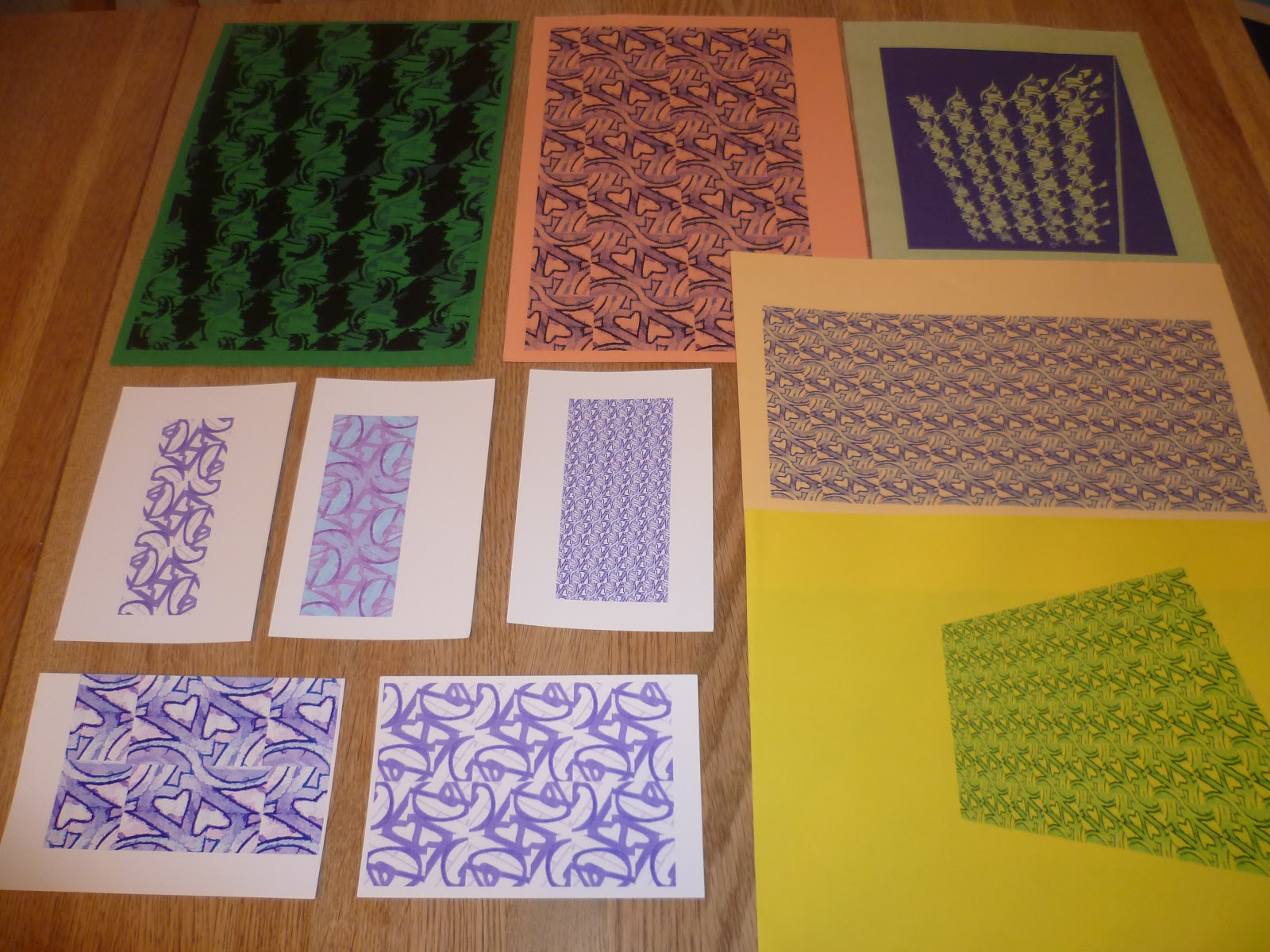Yes, I'd tried screen printing as part of 'Experiments with Printing and Painting' so I knew that the bold shapes with clean edges would work well. I'd decided to select a square design so that I could use it to make repeats. Initially I enlarged the squares and selected the two that I though would work well together as the lines seemed to flow from one shape to the next. I then altered them by hand so the thicknesses matched and there were no 'cut off' edges. Now, whichever way the squares were orientated, the shapes would flow seamlessly.
Which fabrics did you choose? What particular qualities appealed to you?
I was keen to layer the prints so wanted a plain light background that would not be distracting or distort the colour of the ink on this occasion. I did try a patterned background in my experiments but preferred and reverted back to plain. The fabrics were cotton and linen. I liked the closely woven cotton for a single print which the ink soaked into to give clean lines, flat colour and a clear contrast. For layering the prints I liked experimenting with a slightly more open weave as the colour beneath would show through and create texture. It was interesting to notice how the surface became less porous with each layer and how some fabrics required more pulls with the squeegee to get a good print.
(Reflect on some of these questions)
Is the scale of marks and shapes on your samples appropriate to the fabric? Would any of your ideas work better on a different type of fabric - for example, sheer, textured, heavyweight? Why? Do the marks seem well placed, too crowded or too far apart? Were you aware of the negative shapes that were forming in between the positive shapes? What elements are contrasting and what elements are harmonising in each sample? Is there a balance between the two that creates an interesting tension?
I think that for the size of the square, the bottom right print shown above appears to be on the right scale and has a nice balance whereas the top two would need to be in a block of at least four adjacent to each other to feel right. The bottom left does not have enough negative areas to make the shapes clear. It made for a good background but when this was used on top of another design, it obscured it far too much. I was aware of the negative shapes appearing, particularly in the bottom left as they looked like little hearts. The repeating design on this is slightly on the diagonal which creates some tension but I feel would be better either square or with a more slope rather than somewhere in between. I don't know enough about screen printing techniques yet but it might be interesting to repeat the bold designs on a sheer fabric. I can imagine the same scale being used for a long curtain with the light coming through the negative areas.
 |
| Layering prints - the large patterns (top middle) still look exciting and have a good balance of negative space but look at the print below it where the original is almost completely obscured |
How successful do you think your sample is? Do you like the design? Have you recreated or extended your ideas from the previous sample so that there is a visible development between the two? Does your repeating design flow across the surface, without obvious internal edges, or do the shapes and marks in your single unit sample relate well to the size and shape of the fabric? Do they make an interesting composition on this larger scale?
I like elements from all four samples on the top right. I like the scale and the clear colour contrast of the orange top middle print, however the repeats only flow seamlessly in one direction rather than both which is slightly irritating. I like the movement and the colour combinations in the print below it. It feels happy and reminds me of the big prints of a 1970s summer. This is the one I would like develop further if I had time, sticking with the colours but butting and rotating the original design to make a larger screen.
In the print to its right (more vibrant in real life!), I like how the ink has translucence and the colours have mixed so the original negative areas from the bottom layer have turned red or orange
This final sample I like overall, the scale as it is, the colour balance and the formation of new shapes. It evokes memories of cutting out shapes to make paper snowflakes as a child.






























